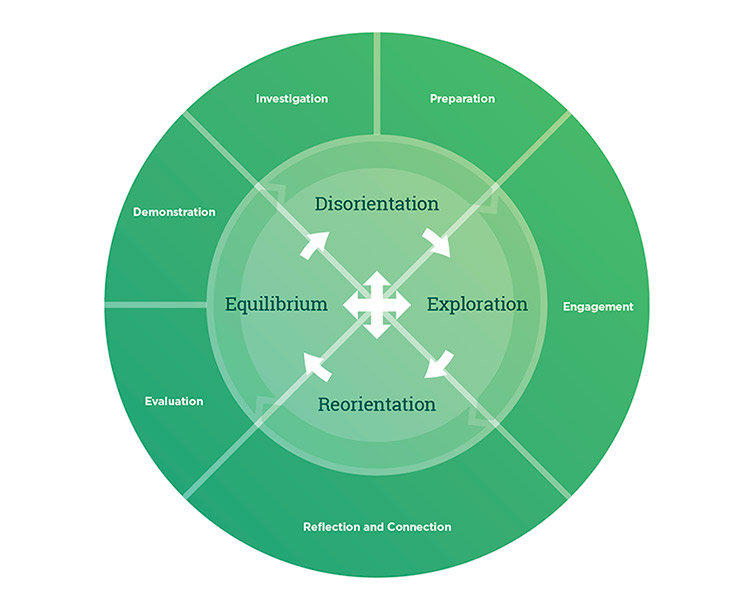Approaches and models are the foundations for how community-engaged learning experiences are led and assessed. Theme one's presenters introduced approaches and models that are utilized in community-engaged learning experiences. Below are summaries and online resources about the iPERCED model, Fair Trade Learning and Project Based Learning teaching.
Nicole Springer's Quality Components of Community Engaged Learning: iPERCED taught participants the importance of theory and scholarship in community-engaged learning through the iPERCED model. The iPERCED model was developed by Michigan State University's Center for Community Engaged Learning to offer high-quality community engagement and service-learning.
The model's seven components, investigation, preparation, engagement, reflection and connection, evaluation and demonstration/celebration align with Taylor's 1987 learning cycle.
Throughout the model, community input is greatly encouraged. Examples of community input are co-teaching, co-planning, training sessions and surveys. More information about the iPERCED model can be found in the MSU Service-Learning Toolkit.

Figure created by Nicole Springer, Christie Schichtel
Eric Hartman's, Ph. D., On-Campus Preparation, Investigation, and Reflection: Curriculum Integration and Advancing Critical Global Citizenship focused on robust on-campus preparation before students apply for travel experiences. Hartman presented Fair Trade Learning, a method that attempts to combat biases and inequities in global partnerships to support strong partnerships when students travel. Fair Trade Learning emphasizes the reciprocation of learning between community members, students and global partners.
Fair Trade Learning is based on 13 core principles that aim to address complex issues whose definitions can differ across borders. It emphasizes aligning community-driven interests and desires with student learning goals to maximize outcomes for all stakeholders. More information about Fair Trade Learning can be found at Fair Trade Learning: Summary and Key Documents from Campus Compact.
Denise Ferrell's, DNP, R.N. Community Engaged Learning: Applying IPE and PBL to Increase 21st Century Skills detailed the value of combining project-based learning, PBL, and interprofessional education, IPE. Combining the two allow students from various disciplines to actively learn through integrating course material with solving problems.
PBL is a teaching method where students develop an evidence-based solution to a real-world problem formed as an open-ended question. Students use 21st-century skills of communication, critical thinking, collaboration and creativity. A successful PBL program identifies the community's strengths and needs with its members and matches students with similar interests, along with professional mentors. The results are presented through multimedia to community partners.
Project-based learning combined with inter-professional education affords students firsthand, real-world experience. More information about project-based learning can be found at What is PBL?